James Stovold
Growing Reservoirs with Developmental Graph Cellular Automata
Aug 11, 2025Abstract:Developmental Graph Cellular Automata (DGCA) are a novel model for morphogenesis, capable of growing directed graphs from single-node seeds. In this paper, we show that DGCAs can be trained to grow reservoirs. Reservoirs are grown with two types of targets: task-driven (using the NARMA family of tasks) and task-independent (using reservoir metrics). Results show that DGCAs are able to grow into a variety of specialized, life-like structures capable of effectively solving benchmark tasks, statistically outperforming `typical' reservoirs on the same task. Overall, these lay the foundation for the development of DGCA systems that produce plastic reservoirs and for modeling functional, adaptive morphogenesis.
Identity Increases Stability in Neural Cellular Automata
Aug 08, 2025Abstract:Neural Cellular Automata (NCAs) offer a way to study the growth of two-dimensional artificial organisms from a single seed cell. From the outset, NCA-grown organisms have had issues with stability, their natural boundary often breaking down and exhibiting tumour-like growth or failing to maintain the expected shape. In this paper, we present a method for improving the stability of NCA-grown organisms by introducing an 'identity' layer with simple constraints during training. Results show that NCAs grown in close proximity are more stable compared with the original NCA model. Moreover, only a single identity value is required to achieve this increase in stability. We observe emergent movement from the stable organisms, with increasing prevalence for models with multiple identity values. This work lays the foundation for further study of the interaction between NCA-grown organisms, paving the way for studying social interaction at a cellular level in artificial organisms.
Neural Cellular Automata Can Respond to Signals
May 22, 2023Abstract:Neural Cellular Automata (NCAs) are a model of morphogenesis, capable of growing two-dimensional artificial organisms from a single seed cell. In this paper, we show that NCAs can be trained to respond to signals. Two types of signal are used: internal (genomically-coded) signals, and external (environmental) signals. Signals are presented to a single pixel for a single timestep. Results show NCAs are able to grow into multiple distinct forms based on internal signals, and are able to change colour based on external signals. Overall these contribute to the development of NCAs as a model of artificial morphogenesis, and pave the way for future developments embedding dynamic behaviour into the NCA model. Code and target images are available through GitHub: https://github.com/jstovold/ALIFE2023
Mixed-Initiative Procedural Content Generation using Level Design Patterns and Interactive Evolutionary Optimisation
May 15, 2020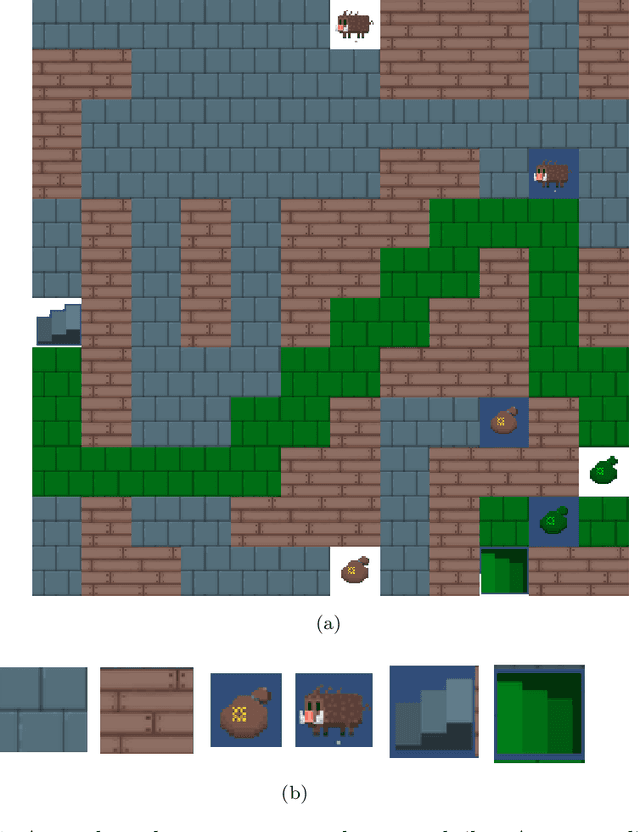
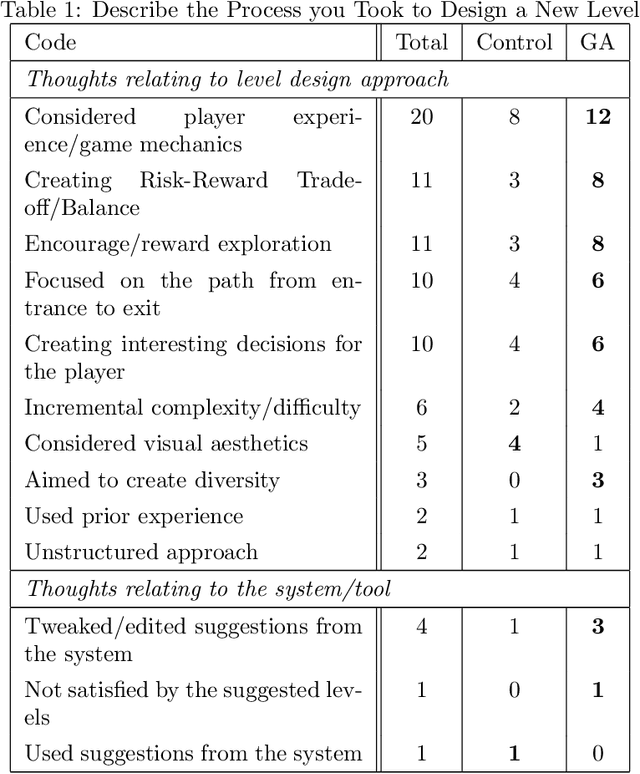
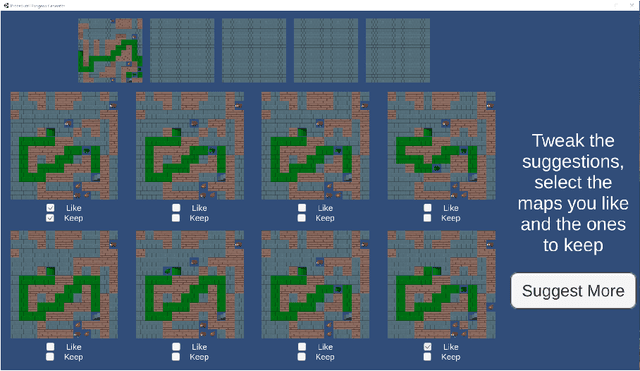
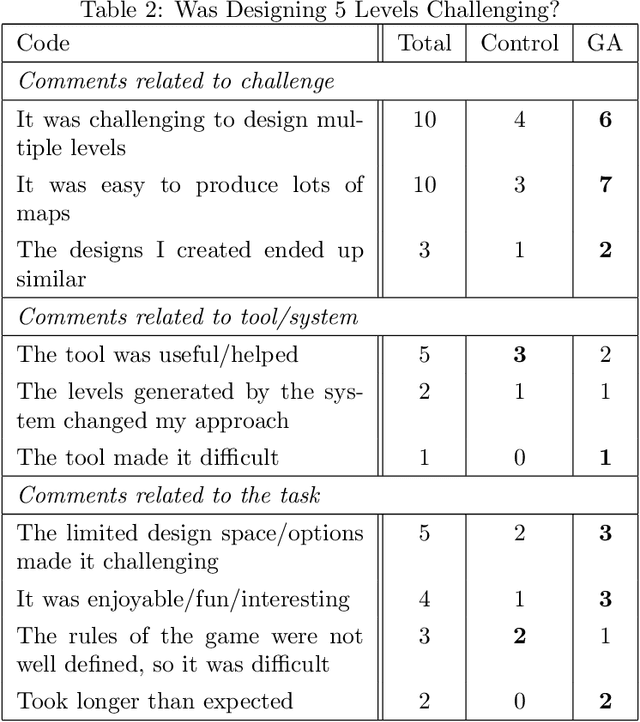
Abstract:An approach for building mixed-initiative tools for the procedural generation of game levels using interactive evolutionary optimisation is introduced. A tool is created based on this approach which (a) is focused on supporting the designer to explore the design space and (b) only requires the designer to interact with it by designing levels. The tool identifies level design patterns in an initial hand-designed map and uses that information to drive an optimisation algorithm. This results in a number of suggestions which are presented to the designer, who can then edit them providing the system with valuable designer feedback. The effectiveness of this approach to create levels with similar level design patterns to a target is illustrated through a series of algorithm driven benchmark tests. To test the mixed-initiative aspect of the tool a triple-blind mixed-method, user study was conducted. When compared to a control group, provided with random level suggestions throughout the design process, the mixed-initiative approach increased engagement in the level design task and was effective in inspiring new ideas and design directions. This provides significant evidence that procedural content generation can be used as a powerful tool to support the human design process.
Cognitively-inspired homeostatic architecture can balance conflicting needs in robots
Nov 25, 2018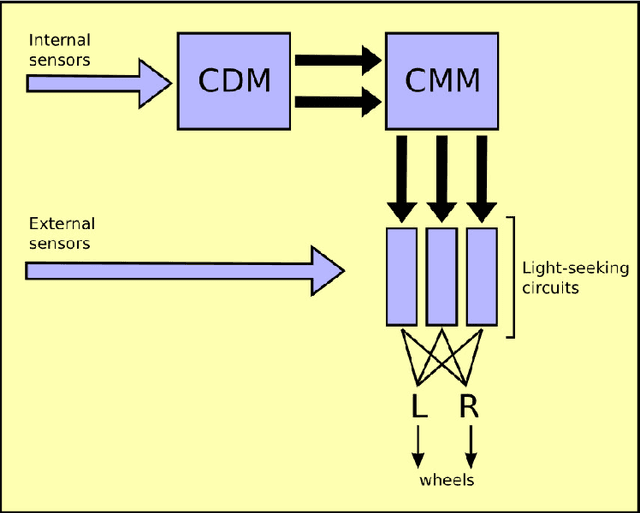
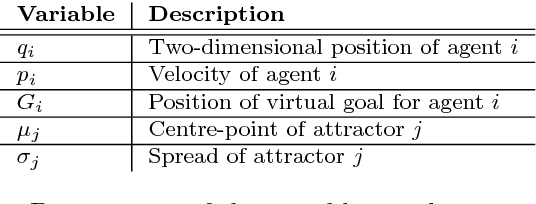

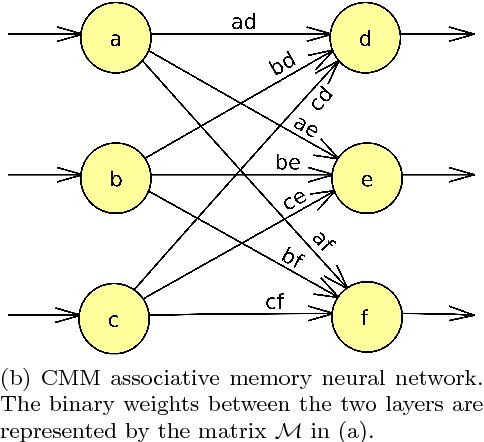
Abstract:Autonomous robots require the ability to balance conflicting needs, such as whether to charge a battery rather than complete a task. Nature has evolved a mechanism for achieving this in the form of homeostasis. This paper presents CogSis, a cognition-inspired architecture for artificial homeostasis. CogSis provides a robot with the ability to balance conflicting needs so that it can maintain its internal state, while still completing its tasks. Through the use of an associative memory neural network, a robot running CogSis is able to learn about its environment rapidly by making associations between sensors. Results show that a Pi-Swarm robot running CogSis can balance charging its battery with completing a task, and can balance conflicting needs, such as charging its battery without overheating. The lab setup consists of a charging station and high-temperature region, demarcated with coloured lamps. The robot associates the colour of a lamp with the effect it has on the robot's internal environment (for example, charging the battery). The robot can then seek out that colour again when it runs low on charge. This work is the first control architecture that takes inspiration directly from distributed cognition. The result is an architecture that is able to learn and apply environmental knowledge rapidly, implementing homeostatic behaviour and balancing conflicting decisions.
 Add to Chrome
Add to Chrome Add to Firefox
Add to Firefox Add to Edge
Add to Edge